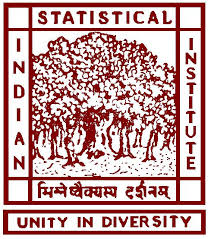Professor P. C. Mahalanobis, the founder Director of the Indian Statistical Institute, and his solid confidence in such services to the budding Indian economy are credited with the creation of the DRTC, according to Ranganathan. Dr. Ranganathan writes in his book Documentation: Genesis and Development (1972) and elsewhere about how Mahalanobis persuaded him of the importance of documentation research and training in India. After many jobs at various Indian universities, Dr Ranganathan moved to Zurich, Switzerland in 1954 with the intention of settling there permanently (Ranganathan, 1972). His principal motivation for going to an industrially advanced European country was to see firsthand the documentation and other library services provided to industry, as well as to conduct his own research and development in the documentation field. In addition, he intended to strengthen his "personal documentation work by linking himself with Europe's industrially advanced countries."
P. C. Mahalanobis, OBE, FRS, is often regarded as India's "Father of Statistics." The politically powerful individual was close to Prime Minister Jawaharlal Nehru and served as the government's statistics advisor. He was a member of the Planning Commission and the author of the 2nd Five Year Plan (FYP, 1956-1961), often known as the Feldman-Mahalanobis model, which prioritised the country's industrialization. Prof. Mahalanobis saw industrialization as one of the most important engines of economic expansion and, as a result, nation-building. Industrialization necessitates domestic research and development. He was aware of the happenings in the field of research and development, worldwide. Imported know-how isn't really useful or practical, and by the time it reaches developing countries, it's out of date. The solution was indigenous research. As a result, Mahalanobis saw a need for a national centre for documentation research and education, where documentalists could conduct in-depth research into advanced documentation theory and methodologies. The proposed centre would teach people to work at documentation centres all around the country.
Ranganathan's reputation as a library and information science expert had spread to Mahalanobis. In order to make his idea a reality, Mahalanobis contacted Ranganathan in Europe in 1956 and offered him the opportunity to establish such a centre in India. Dr Ranganathan was asked to lead India's documentation research and training programme (Ranganathan, 1965). Ranganathan was exhorted not to shirk his obligation to give his best for the country at that critical moment. Ranganathan, who was wary at the time, believed that time was not rife in the mid-1950s. He had noticed that there was little demand for documentation services by the industrial and corporate houses based on his experience with the Indian National Scientific Documentation Centre (INSDOC, New Delhi). The Association of Special Libraries and Information Centre (IASLIC, Kolkata) and the INSDOC offered needed minimum and primitive documentation services. Ranganathan returned to India in February 1957 for a number of reasons. Mahalanobis had persevered and had not given up. Dr Ranganathan, on the other hand, took another half-decade to be convinced of India's documentation research and training programme. Ranganathan was still unsure if there would be enough demand for such documentation services and, as a result, a centre.
By the early 1960s, India's industry had realised the need for documentation services for research and development. Ranganathan has begun to receive requests for similar services from time to time (Satija, Tiwari & Bagchi, 2022). Mr Jibanand Saha, the librarian of the ISI in Kolkata, was instrumental in resolving the issue in 1961. J. Saha was an effective mediator between Mahalanobis and Ranganathan, as the former was someone Mahalanobis trusted. Saha reiterated Mahalanobis' suggestion and requested that he create a formal memorandum for this purpose. In mid-1961, Ranganathan drafted and submitted it. Mahalanobis approved the formal memorandum and had it approved by the ISI's several statutory authorities. It was very well received by India's Prime Minister. Everything happened in the blink of an eye over the course of two weeks. The DRTC came to completion after the director of the ISI, Kolkata's third attempt. Another issue was that Ranganathan's wife, Sarada Ranganathan (1908-1985), wanted to live in South India. By chance, the ISI was planning to construct a full-fledged regional centre in Bangalore, and it was determined that the DRTC would be one of the units there. The DRTC was conceived and born in this manner. On the 1st of January 1962, a rented building near Ranganathan's residence was occupied, and the projected centre was founded as a unit of the Indian Statistical Institute in Bangalore, rather than Kolkata (Satija, Tiwari & Bagchi, 2022), (Waghmare, 2015).
(Note: The above is published under the title "Documentation Research and Training Center (DRTC): A Historical Perspective" in the first issue of the 42nd volume of the Journal Library Progress (International)). For further reading on the development and genesis of DRTC please go through the following references:
- Satija, M. P., Tiwari, A., & Bagchi, M. (2022). Documentation Research and Training Center (DRTC): A Historical Perspective. Library Progress(International), 42(1), 220–230. https://doi.org/10.5958/2320-317X.2022.00020.4
- Waghmare, S. S. (2015). Knowledge mapping of DRTC annual seminar publications: A scientometric study. Dr Babasaheb Ambedkar Marathwada University (Thesis).
- Ranganathan, S. R. (1972). Documentation: Genesis and development. Vikas Publisher; New Delhi, Chap. F, pp.173-188.
- Ranganathan, S. R. (1965). DRTC and its role in documentation. DRTC Annual Seminar. Pp 3-25.
